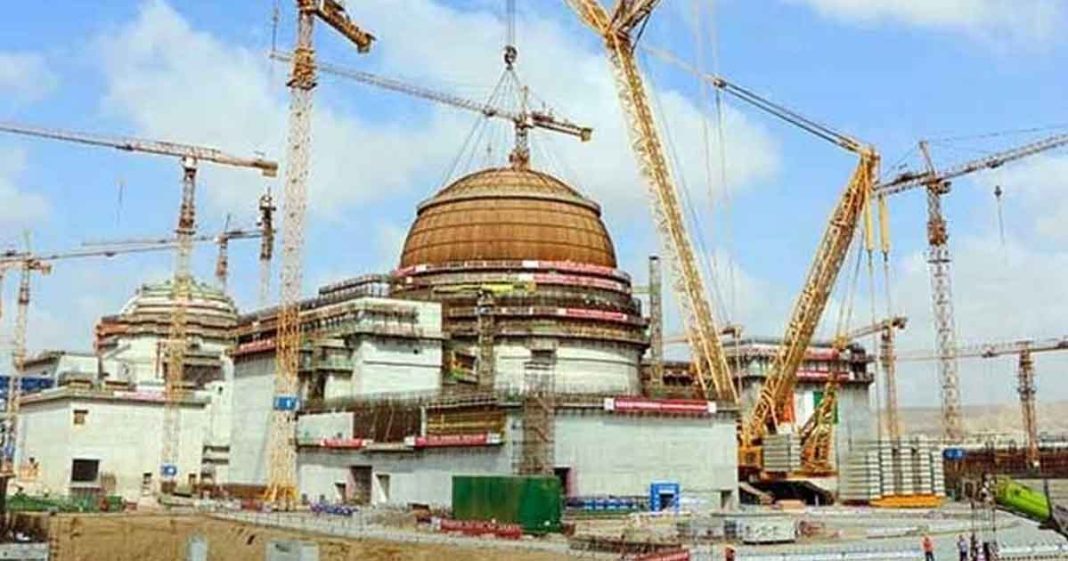In the absence of the requisite payment by the Central Power Purchasing Agency – Guaranteed (CPPA-G), Pakistan Atomic Energy Commission (PAEC) is facing severe financial problems, which might lead to PAEC defaulting on foreign loan repayments.
According to sources privy to the matter, the Strategic Planning Division (SPD) – Pakistan’s agency responsible for the security and protection of the country’s tactical and strategic nuclear weapons and assets – has urged the relevant stakeholders and authorities to hold an intra-ministerial meeting at the earliest and address the issue.
The Nuclear power plants (NPPs) in question are being managed under Pakistan’s Nuclear Energy Vision 2050, which seeks to generate 44,000 MW of electric power by 2050. So far, six power plants – two in Karachi and four in Chashma – contribute around 3,500 MW to the national grid.
Read more: Pakistan to become major nuclear energy producer by 2030
However, Pakistan’s Nuclear Energy Vision seems to be in a pickle mainly because of the outstanding revenue payments. The issue has been highlighted in several intra-ministerial meetings by the Strategic Planning Division, but so far, no substantial improvement has taken place. Judging by the current trend, sources privy to the matter maintain that the prospective situation is likely to aggravate.
SPD has underscored that any further aggravation would impact the operational maintenance of plants. The department further added that strategic assets should not be treated at par with Independent Power Producers. The government is also in debt to IPPs and Genco’s and has to pay over one trillion rupees to them.
Pakistan's 1,100 Megawatts Karachi Nuclear Power Plant Unit-3 (K-3) built with Chinese cooperation, has achieved criticality status for the first time, allowing the unit to produce power. #Nuclear #Power #Energy #renewables #electricity #Karachi #Sindh #Pakistan #EmergingPakistan pic.twitter.com/72jhEXbTQF
— Emerging Pakistan (@dev9_) February 26, 2022
SPD further emphasized the need for routine maintainance the Nuclear Power Plants (NPPs) as they were under surveillance and being monitored closely by the International Atomic Energy Agency, and any lapses in the operational maintenance would be duly noted by the agency. It added that so far, Pakistan has maintained an excellent record, but it could not afford any scrutiny from the inspecting agency.
Read more: Safe Clean energy to come very soon to Pakistan, K-2 Nuclear Power Plant by China’s CNNC
The loan repayment issue mainly concerns the K-2/ K-3 project for which the PAEC borrowed money. China committed $6.5 billion to fund the Pakistani nuclear project in the port city of Karachi. The move sought to strengthen ties with Pakistan and increase mutual cooperation between the two countries. As part of the deal, China also waived $250,000 off the insurance premium.
Pakistan currently operates six operable reactors supplied by China, namely; CHASNUPP-1, CHASNUPP-2, Chashma Nuclear Power Plant Unit 3-4, and K-2, K-3, and produces a total of 3,256 MWe. However, as Pakistan is not a party to the Nuclear Non-Proliferation Treaty, it is largely excluded from any nuclear trade deals hindering the progress of its civilian nuclear program.
Pakistan considers energy from nuclear sources a component of its vision 2050. Currently, according to National Electric Power Regulator Authority state industry report 2021, Pakistan’s total installed power generation capacity is 39,772 MW of which 6.5 percent is supplied by nuclear sources and the remaining 93.5 percent by mainly thermal (63 percent) and hydel (24.9) sources. Moreover, the shift to nuclear sources for power generation is also very cost-effective. According to National Electric Power Regulatory Authority, during 2019-20, the average cost of per unit of electricity through nuclear sources has been Rs.10.8 per unit of electricity, second lowest after hydro in the power market.














